One of the main draws for those that make their way to Sarawak, the Malaysian state on the northern side of Borneo, is the street food. From the town of Bau in the southwest to Lawas in the northeast, hawkers on the streets and stall vendors in the endless kopitiam (local coffee houses) offer up heaping plates. Try the deceptively simple noodle-and-barbecued pork kolok mee, the swampy and potent local take on rice-noodle laksa soup, and the head-to-hoof pork and noodle mystery that is kueh chap. Storefronts proffer treats from skewers of boiled everything (lok lok) to indigenous (Dayak) food like chicken packed with spices cooked in bamboo tubes (pansoh). It’s easy to get lost in Sarawakian cuisine for your entire stay.
But it would be a shame to miss out on the state’s vast array of raw produce, which is largely unattainable outside of the region. Much of it is easy to find in local markets, yet rarely features in urban fare.
The diversity of produce available in Sarawak should come as no surprise given the ecology of Borneo. Borneo is the world’s third-largest island, and its sudden shifts in climate and terrain, abundant rain, and rich soil have lent it a degree of endemism that makes biologists swoon, with its thousands of unique plants and trees. Dozens of these species produce edible fruits, leaves, or roots.
Joseph Daniel is a member of the Bidayuh tribe, which call the Sarawak river basin in the southwest of the state home. He is also the proprietor of the decade-old Bumbu Cooking Class in Kuching, a pioneering bid at educating locals and visitors on indigenous produce and culinary traditions.
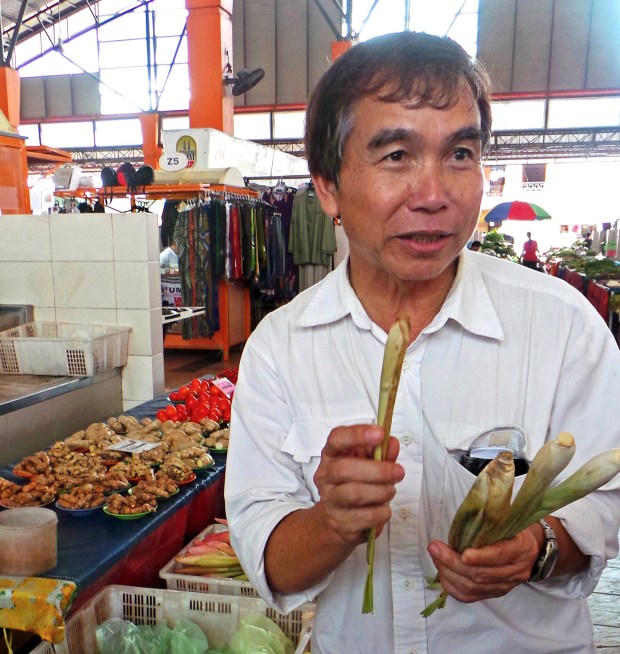
He says that in the past, produce largely stayed in the towns where it was grown. Jungle food was seen as backward and undesirable when compared to more international fare. This, combined with the influence of foreign food cultures on Sarawak’s street and kopitiam foods, may help explain why so few dishes in the cities include indigenous produce.
But in recent years, Daniel says, local consumers have started to value the hyper-local and the health benefits of a produce-rich diet (Daniel mentions that his grandfather lived to well past 100). Villagers now flood weekend markets all over Sarawak with an arresting array of fruits and shoots.
Perhaps the most famous and popular Sarawakian produce available in markets today is midin, the bud of a fern that grows wild near Dayak villages. The texture and taste could be compared to soft asparagus—and it’s prepared similarly, often fried in oil with red wine and garlic or spices.
Midin is so popular in Sarawakian cities these days that the state and private farmers have tried to cultivate it, but found that it fails to grow unless it picks its own spots. It travels poorly as well, so this is truly a specialty you have to get in Sarawak.
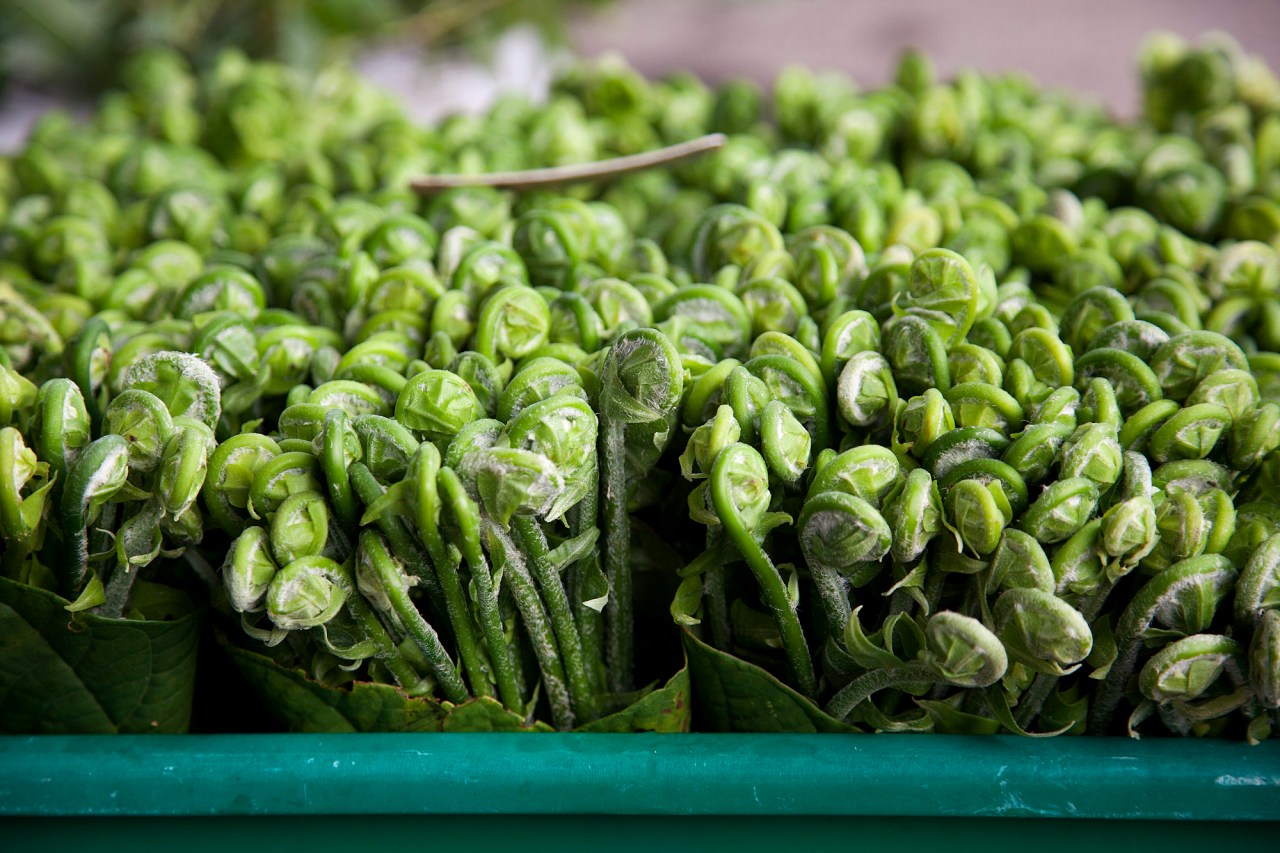
Not everything sold as midin in markets and restaurants is authentic. Another type of local fern with a lighter hue and less tightly curled leaf bud, known as paku, frequently masquerades as its pricier cousin. There’s nothing wrong with paku, but it’s vital to understand the difference between the two so as to fully appreciate what makes midin so beloved.
Sarawak’s offerings go far beyond ferns, though. It can be difficult, as an outsider, to parse what is uniquely Bornean, or just a local cultivar of another Southeast Asian product. However, you can find a few reliable Sarawakian standards, some of which are absent even in the neighboring state of Sabah.
Dabai, also known as the Sibu olive, secretly packs a creamy yellow flesh that only reveals itself after its rough exterior takes a long soak in a tub of water. Enjoy it with a touch of soy to bring out the fruit’s savory potential.
Engkala, a little pink orb, has managed to make its way to the Malaysian peninsula and the southern Philippines. It’s extremely abundant and arguably at its best in Borneo. Another creamy, thick-fleshed fruit, some liken it to avocado.
Tarap, which can also be found in the southern Philippines looks, from the outside, like a mix between a jackfruit and a durian and opens up to reveal white nodules. These little bonbons are creamy and very sweet.
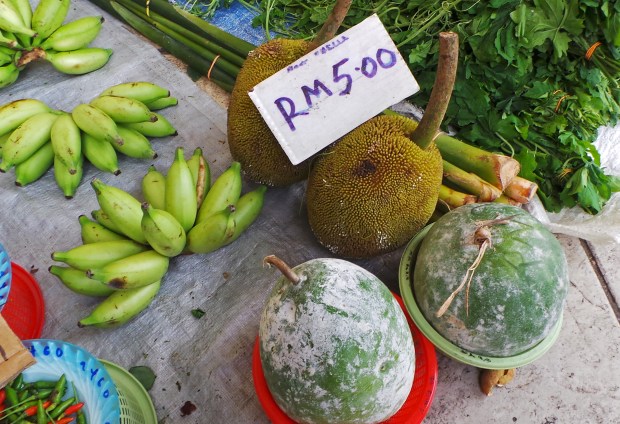
There are also two fruits that share a similar exterior—bark-like skin and a globular body. However one has a white-fleshed interior, the bitongon, while the other is yellowish, the tampoi. These are comparatively hard to find but pack a shocking mandarin-like flavor.
This is only a sampling of what’s on offer. Many villages have their own traditions of eating this creeper or that tuber, some of which never make it further than their ecosystems. In order to plumb the depths of Sarawakian produce, it’s necessary to strike out into the smaller villages. But barring that, your best bet would be to come around the end of the year, during the heaviest fruiting season—and to avoid coming (for the fruits and veg at least) during Gawai, the early June harvest festival, when vendors are most likely to skip their trips to the jungle and the market in favor of staying in and enjoying the booze-drenched festivities.
Beyond endemic produce, a few items that grow the world over merit special consideration in Sarawak as well. The villages around Bario in the Kelabit Highlands, right on the interior border with Indonesia, famously produce puzzling pineapples (crunchy and sweet but with no astringency to speak of) and sweet, sticky, and flavorful medium grain rice, both of which are beloved throughout Sarawak, luxury products on the Malay Peninsula, and all but absent elsewhere in the world.

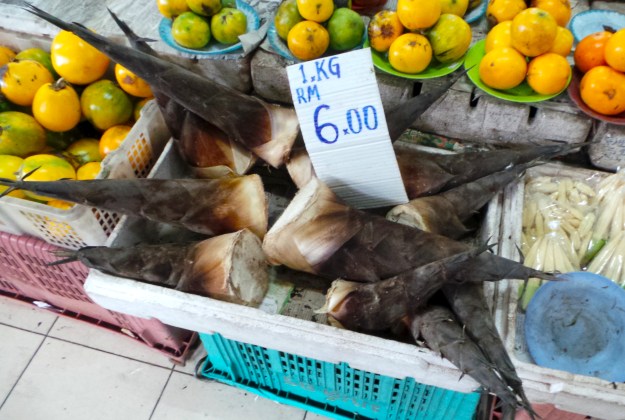
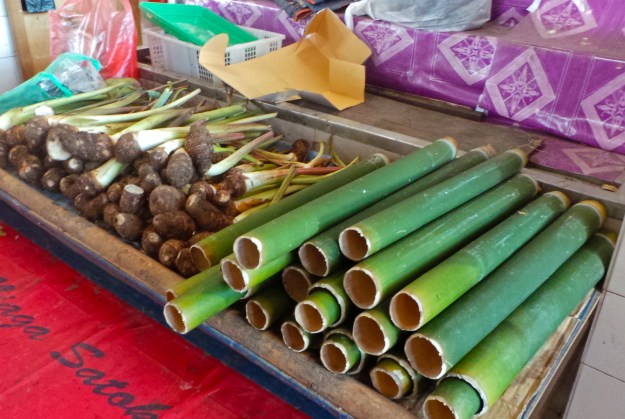
Sarawak is also known as one of the world’s leading centers of black and white pepper cultivation, producing especially fruity and strong seeds—although this is mostly a cash crop. The state is home to dozens of varieties of wild mango, orange, banana, and durian—Dayak cook and eat durian flowers as well—and a host of other fruits and vegetables. Some of these, like the terung (the local breed of Asian eggplant) deserve attention if only for the role they play in Dayak art–the flowers are a key design in Dayak tattoos, and the flowers and leaves recur throughout modern Dayak art.
Although aggressive logging has slowly peeled back its forests from the coasts, Sarawak is still a jungle. Just as it takes time and an experienced guide to navigate a jungle, finding and munching your way through every worthwhile bit of produce the state, much less the wider island, has to offer is slow going—and benefits from the aid of locals pointing you in the right direction. The joy of discovery—of finding that new taste, experiencing fruit and vegetables you cannot find anywhere else in the world—is as exquisite as getting lost amidst street cuisine.